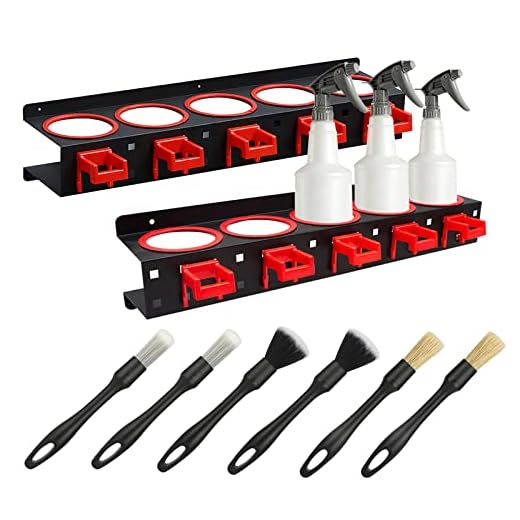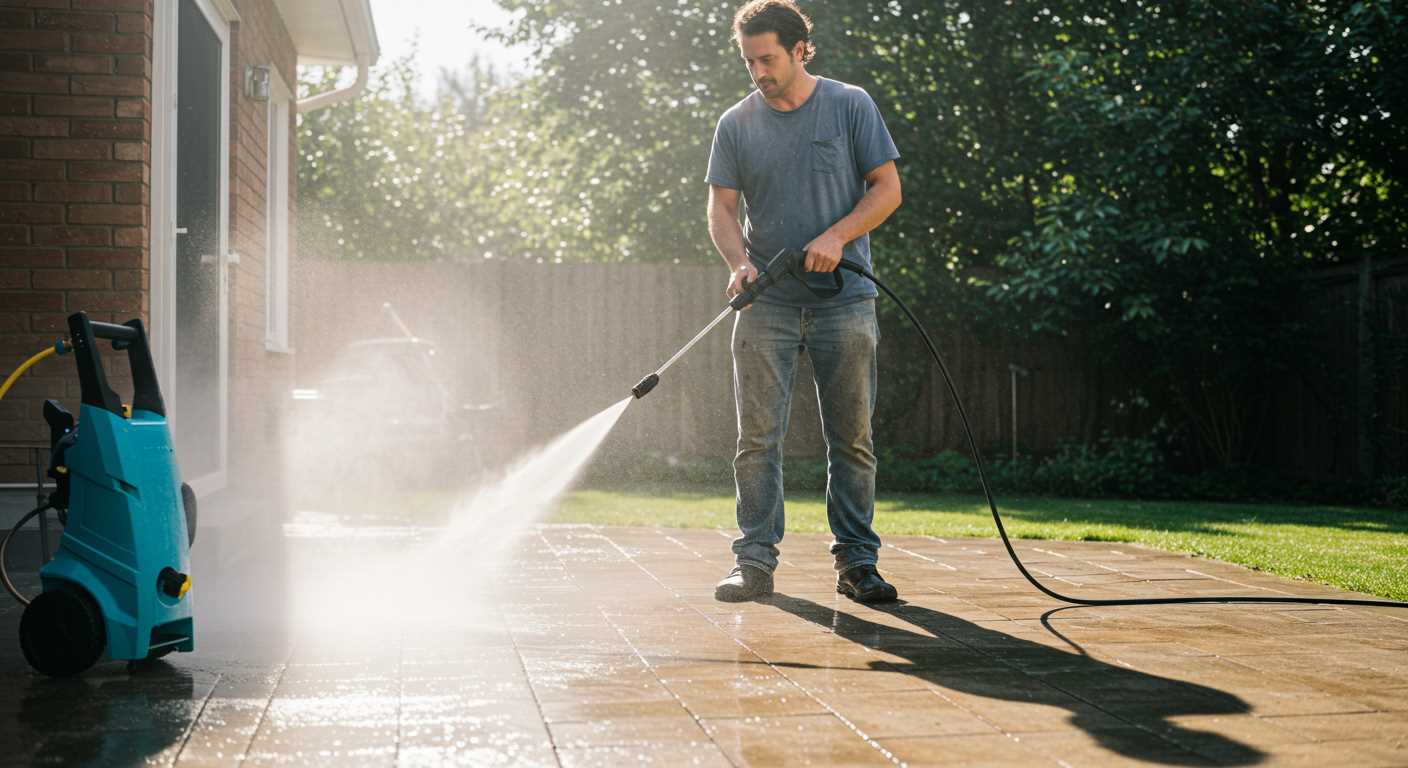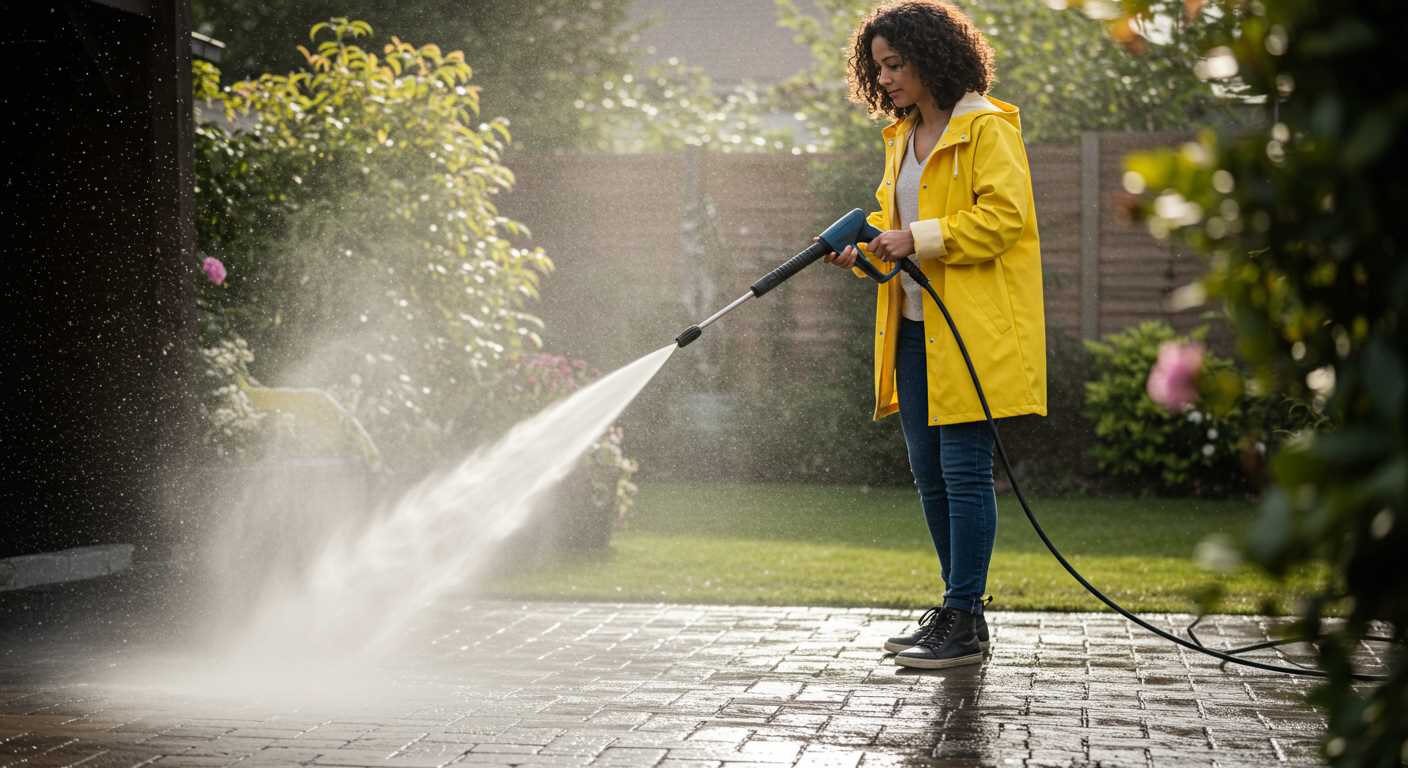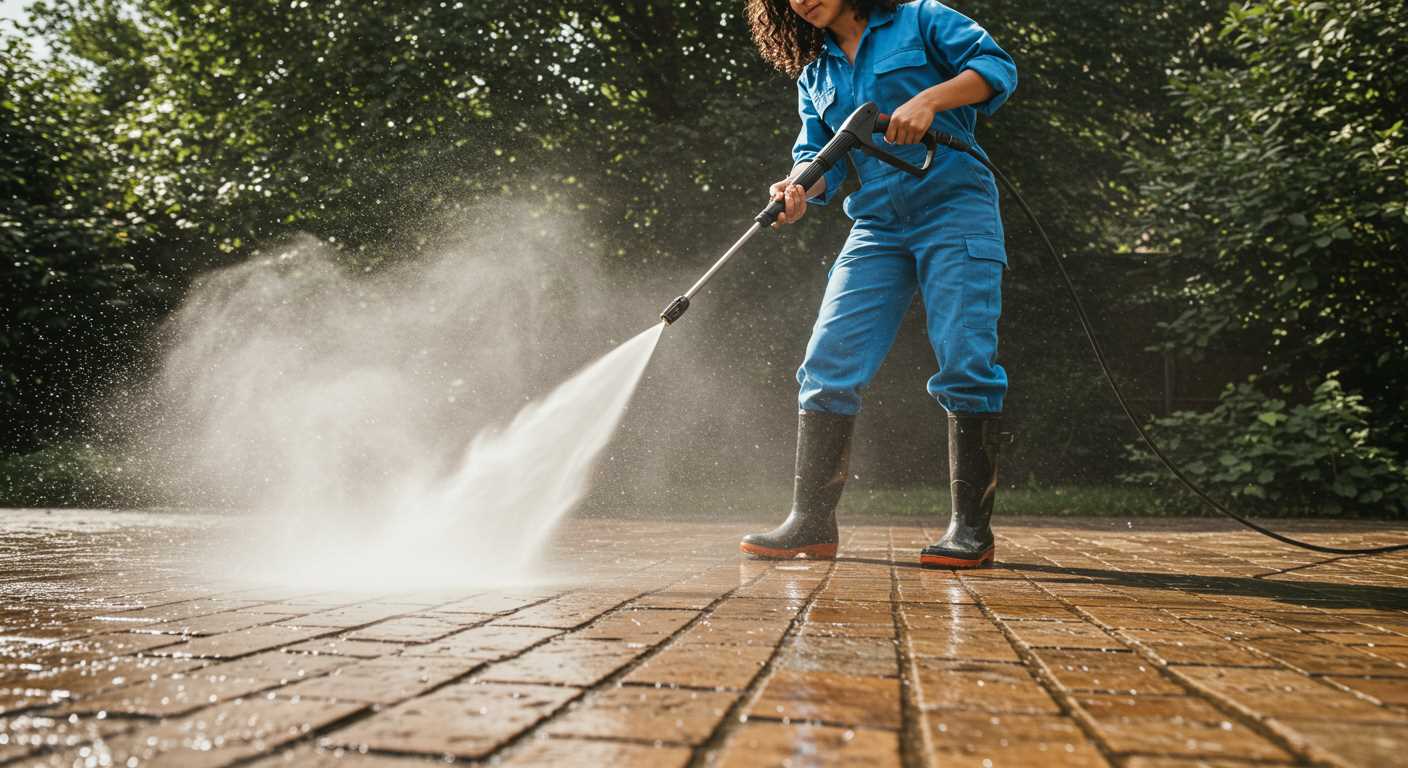



Prior to beginning, ensure you have the correct nozzle attachment installed; typically, a 25-degree nozzle is ideal for automotive surfaces. This angle provides optimal coverage without risking damage to the paintwork.
Start from the top of the vehicle, working your way down, as this method allows dirt and grime to flow off, diminishing the likelihood of spots or residues. Maintain a distance of approximately two feet to prevent any unintentional chipping or stripping of wax.
Always remember to rinse the wheels and wheel arches first, followed by the body to avoid reapplying dirt. For stubborn spots, a dedicated automotive detergent can be introduced, being careful to read product instructions for proper dilution and application. Safety gear, including goggles and gloves, should be worn throughout the cleaning process.
After rinsing with clear water, follow up with a gentle drying cloth or chamois to prevent water spots. Regular maintenance can help keep the vehicle looking sharp and extending the life of the finish.
Operating High-Pressure Equipment on Your Vehicle
Begin with ensuring your vehicle is parked on a level surface. This reduces the risk of water pooling, which leads to streaks and potential damage.
Select an appropriate nozzle; a fan nozzle at approximately 25 degrees is ideal for most parts of the vehicle. This setting provides sufficient force without risking damage to delicate surfaces.
Maintain a safe distance of at least 2 feet from the paintwork. This prevents chipping and ensures thorough cleaning without excessive force.
Start from the top and work your way down. This method ensures that dirt and grime flow downward, preventing re-soiling of already cleaned areas.
For stubborn dirt, such as brake dust on wheels, a lower pressure or a specialised cleaning solution might be necessary. Apply the solution with a non-abrasive sponge or cloth before rinsing.
Be cautious around sensitive areas, such as lights, mirrors, and emblems. Directing high-pressure water into these components can lead to leaks or dislodged parts.
After rinsing, dry the vehicle promptly with a microfiber towel to avoid water spots. This will not only enhance the appearance but also preserve the paint.
Conduct regular maintenance on your equipment, including cleaning filters and checking hoses. This ensures optimal performance and extends the lifespan of your device.
Lastly, invest time in reading the manufacturer’s manual for specific advice on compatibility and settings to maximise efficiency and safety.
Selecting the Right Pressure Washer for Your Car
Opt for a model with a pressure rating between 1200 to 1900 PSI, which is ideal for automotive cleaning. This range effectively removes dirt without risking damage to the vehicle’s surface.
Pay attention to the GPM (gallons per minute) value, as a higher GPM ensures faster cleaning. Aim for a rate of 1.4 to 2.0 GPM for optimal results.
Consider adjustable nozzles or multi-functional spray tips that allow for versatility in handling various cleaning situations. A wide-angle spray is great for rinsing off, while a narrow jet is perfect for tackling stubborn grime.
Evaluate the weight and portability of the machine. A lightweight model on wheels can make manoeuvring around your vehicle easy.
Look for electric models for quiet operation and low maintenance. They are typically lighter and easier to use compared to gas-powered versions, making them suitable for domestic settings.
Examine the length of the hose and power cord. A long hose allows better reach without constantly repositioning the unit, while an adequate power cord length offers flexibility in placement.
Read reviews and seek recommendations to find reliable brands known for durability and performance. Some reputable names in the industry include Kärcher, Bosch, and Sun Joe.
Finally, consider any additional features, such as foam cannons. These can enhance your cleaning experience by applying detergent effectively, aiding in the removal of tough stains.
Preparing Your Car for Pressure Washing
Begin with a thorough inspection of your vehicle. Remove all personal items, including floor mats, from both the interior and trunk. This prevents damage and ensures no loose items interfere with cleaning.
Next, secure any external fittings such as antennae or spoilers. If they are removable, take them off. Additionally, masking tape can be used to protect sensitive areas like camera lenses or sensors from excessive force or water intrusion.
Check for loose or damaged components on the exterior. Ensure that mirrors, lights, and trims are firmly attached. If any parts are compromised, consider fixing them before proceeding to avoid potential issues during cleaning.
Rinse Surface Before Application
A preliminary rinse with a simple garden hose will help remove larger debris, dirt, or grime. This step reduces the risk of scratches from dirt particles during the cleaning process. Focus on the lower portions of the vehicle where dirt tends to accumulate.
Use Appropriate Cleaning Solutions
Opt for a pH-balanced cleaner specifically designed for automotive surfaces. Dilute as directed. Apply the solution to the vehicle’s surface, allowing it to rest for a short period. This ensures effective break down of contaminants while minimizing effort during washing.
| Task | Description |
|---|---|
| Inspection | Remove personal items, inspect for damage. |
| Secure Fittings | Remove or tape sensitive components. |
| Pre-rinse | Use a garden hose to clear debris. |
| Apply Cleaner | Dilute and apply a suitable automotive cleaner. |
Choosing the Correct Nozzle and Pressure Setting

Select a fan nozzle with a 25-degree angle for routine cleaning tasks on vehicle surfaces. This nozzle allows a wide spray pattern, minimising the risk of damage. For stubborn dirt or grime, transition to a 15-degree nozzle, which offers a more concentrated stream but requires caution to prevent potential harm to paint and clear coat.
Adjust settings based on the car’s condition. For a lightly soiled exterior, a pressure level between 1200 to 1500 PSI suffices. Increase to approximately 2000 PSI for challenging spots, ensuring safety and avoiding abrasive action.
Ensure an appropriate distance of 2 to 3 feet between the nozzle and the vehicle to prevent unintended stripping of paint. Always begin at the highest point and gradually work down to avoid streaking. Aim to test the spray on a small, inconspicuous area before proceeding.
Remember to maintain a consistent motion and avoid lingering in one spot. This will help in achieving an even and thorough clean while safeguarding the integrity of the vehicle’s finish. Keeping these recommendations in mind guarantees an efficient and safe procedure that enhances your vehicle’s appearance without compromising its condition.
Applying Detergent and Pre-Soaking Techniques
Begin with a suitable cleaning solution specifically designed for automotive surfaces. These detergents are formulated to break down dirt and grime without harming paint or trim. Always read the manufacturer’s instructions for dilution ratios and application methods.
Step-by-Step Guide for Application
- Fill the detergent tank of your cleaner with the chosen automotive detergent.
- Connect the detergent nozzle, ensuring a proper seal to prevent leakage.
- Spray a generous layer of detergent on the vehicle, allowing it to cover all surfaces.
- Let the detergent sit for about 5-10 minutes; this soaking time allows the formula to penetrate and loosen contaminants.
- Rinse the solution using a low-pressure setting to avoid any damage to the paintwork.
Benefits of Pre-Soaking

- Enhances cleaning efficiency by softening tough stains.
- Reduces the need for aggressive scrubbing, helping to protect the surface.
- Promotes a more thorough rinse by breaking down residue.
Following these techniques ensures a streamlined cleaning process, maximising results while maintaining the integrity of your vehicle’s appearance. Always test products first on an inconspicuous area to avoid unexpected reactions with the surface.
Step-by-Step Pressure Washing Process
Begin with a thorough inspection of the vehicle. Identify any areas of concern such as scratches or paint chips before proceeding.
Ensure the surrounding area is free of items that could obstruct or interfere during the cleaning. Parking on a flat, stable surface is ideal to avoid any movements while working.
Adjust the settings on your equipment, ensuring that the water supply is uninterrupted. Connect the device to a power source if electric, and allow any pressurised water to settle before starting.
Commence with the bottom sections of the vehicle. This helps to prevent dirt and grime from splashing up onto the body as you ascend in height.
Maintain a consistent distance of about 18-24 inches from the surface. Keeping a steady hand reduces the risk of damaging the paint through excessive force or incorrect angling.
As you move along the bodywork, use sweeping motions. Avoid targeting one spot for too long to prevent potential damage to the clear coat.
After completing the sides, clean the roof, bonnet, and boot. Adjust your stance to ensure even coverage without reaching excessively.
Follow up by tackling the wheels and undercarriage. Use a compatible attachment or adjust the nozzle setting to accommodate these areas effectively.
Conduct a final rinse, ensuring all detergent and debris are removed. Inspect once more to confirm thorough cleaning. Allow the vehicle to air dry, or use a microfibre towel for quicker results.
Conclude by checking for any missed spots or areas needing extra attention. This step guarantees a comprehensive finish and enhances the overall appearance.
Post-Wash Care and Maintenance of Your Car
After cleaning, it is essential to ensure your vehicle is adequately dried to prevent water spots and streaks. Use a clean, soft microfiber towel for optimal results. Start from the top and work your way down, drying one section at a time to ensure thoroughness.
Protecting the Finish

Once dried, applying a quality wax or sealant can significantly enhance your vehicle’s shine and provide additional protection against environmental elements. Choose a product suitable for your vehicle’s surface type. Follow the manufacturer’s instructions for the best outcome, allowing the wax to cure as needed before exposing it to moisture.
Regular Inspections
Post-wash, take a moment to inspect for any missed spots or dirt that may still cling to the surface. If necessary, you can touch these areas up with a gentle cleaning solution and a soft cloth. Additionally, check tyre conditions and clean the wheels to remove any brake dust or grime that may remain.
Establish a routine to monitor the vehicle’s exterior and interior for any signs of wear or damage. Regular upkeep will prolong the life of both the finish and the components of your vehicle, ensuring it remains in prime condition for the long run.







